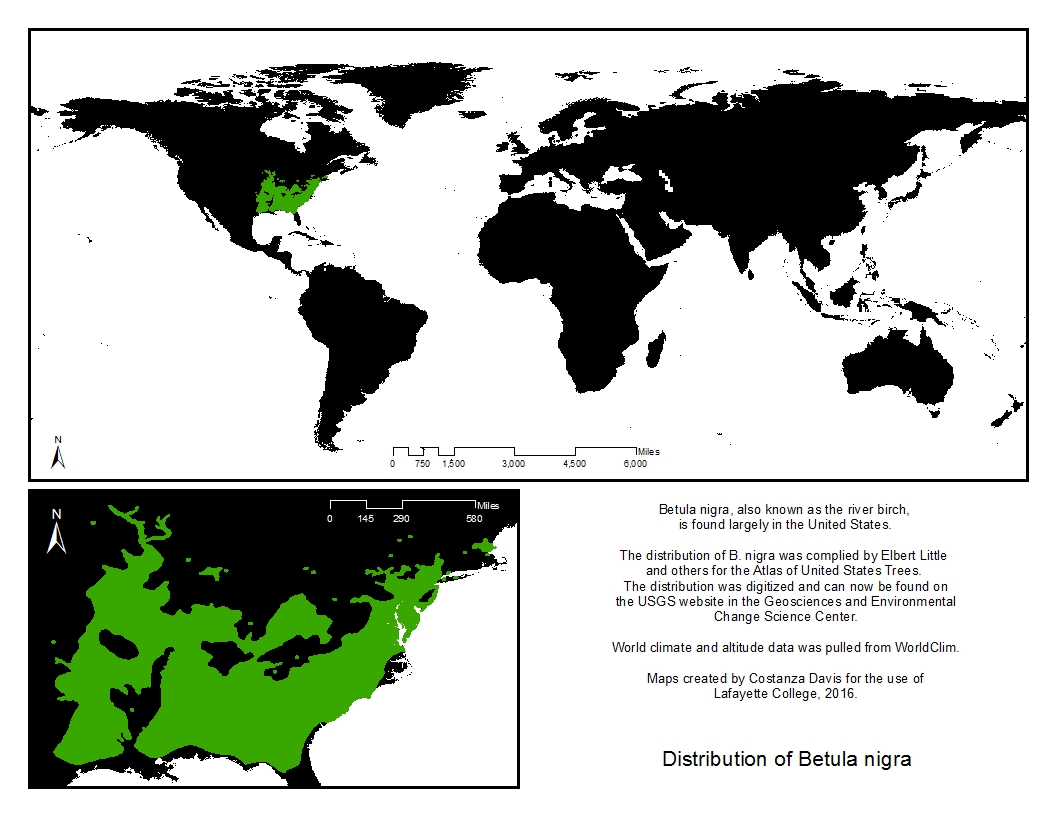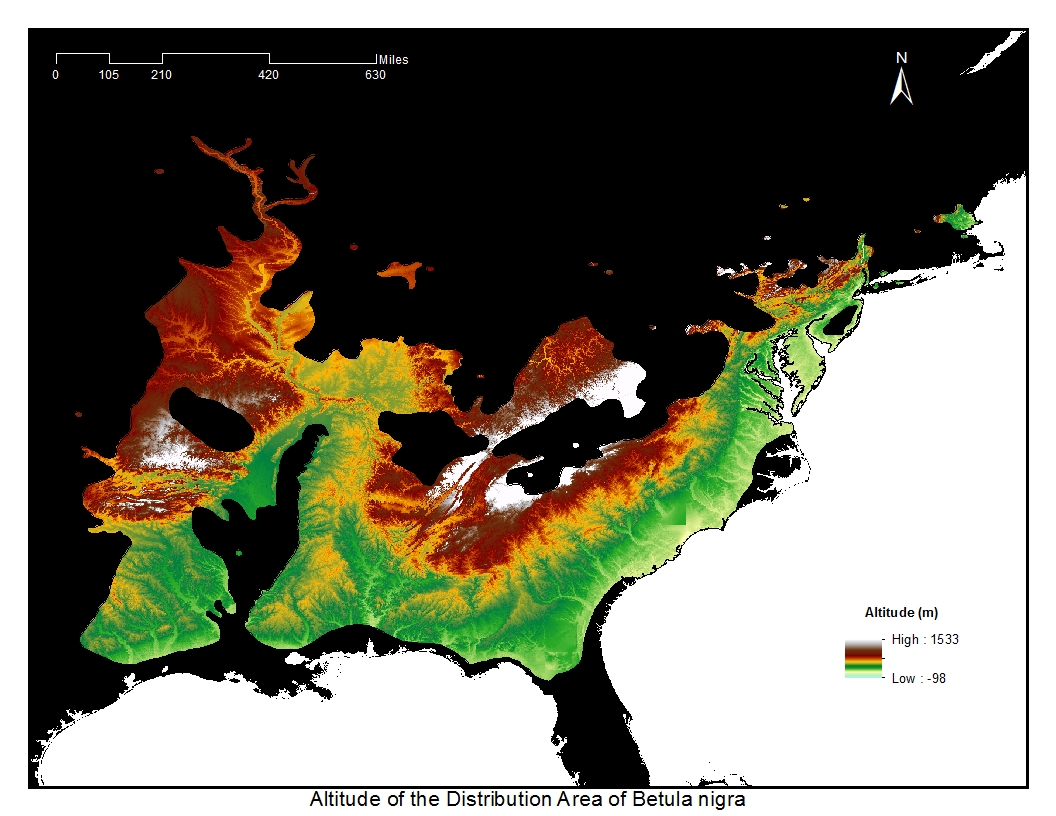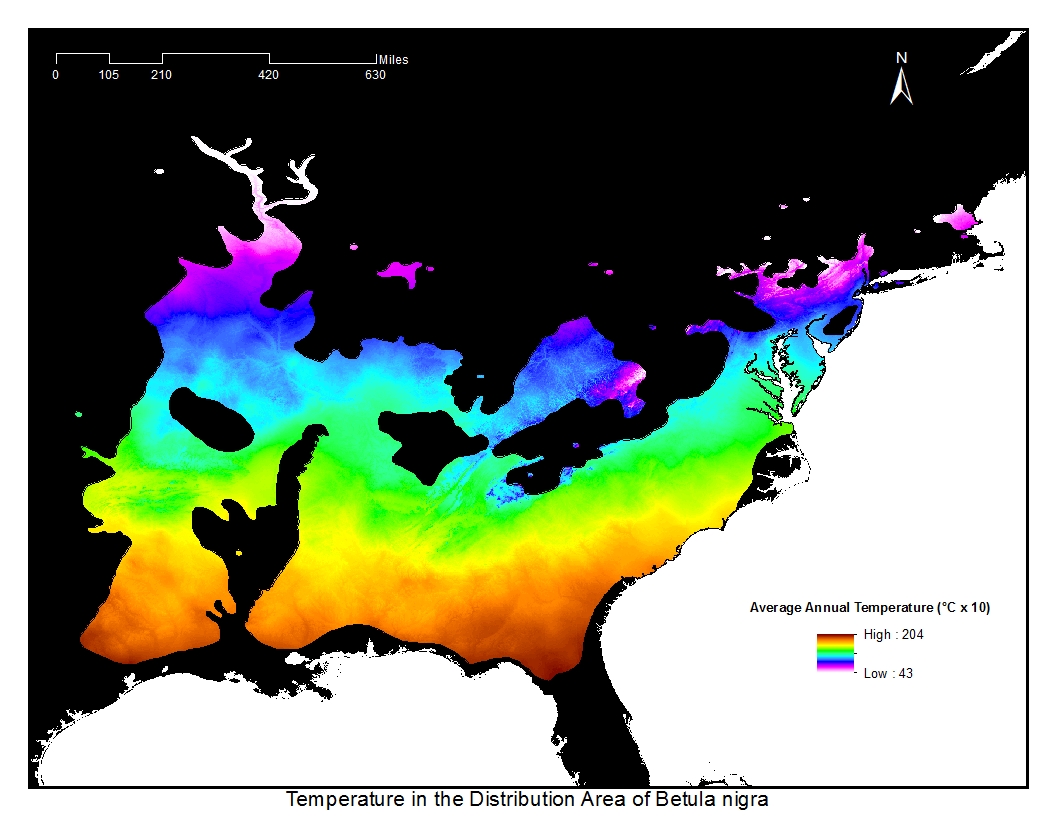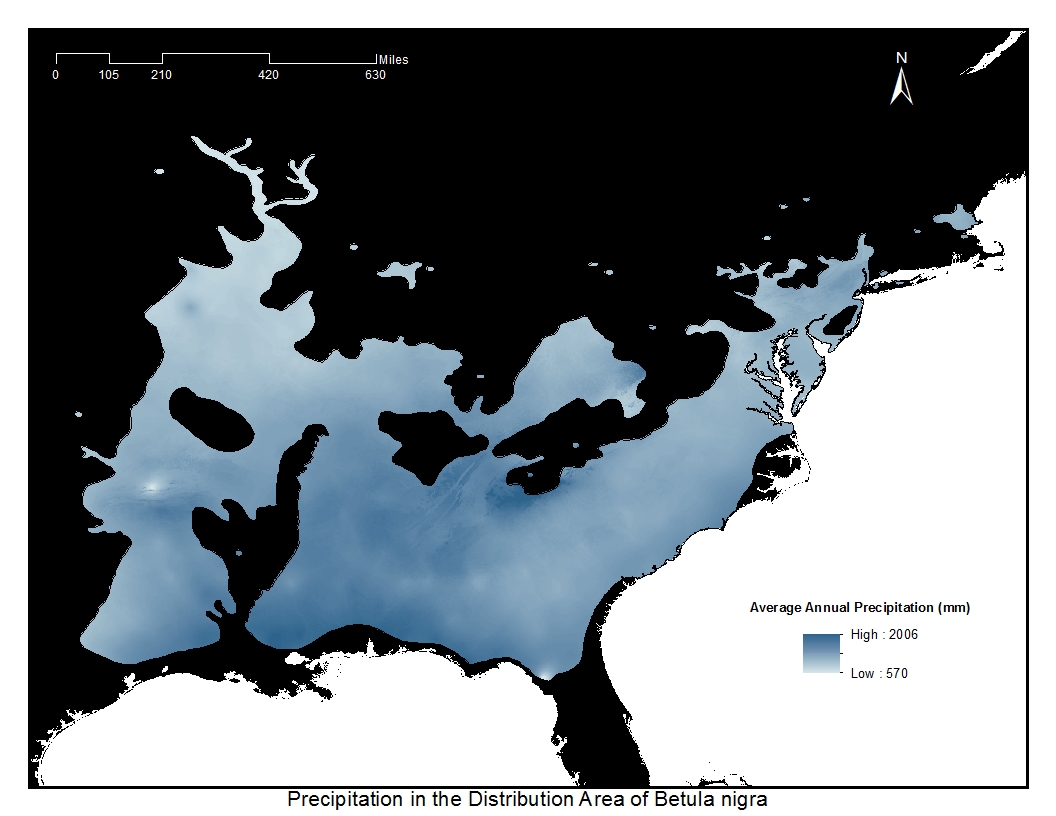The river birch, Betula nigra, is also known as the red birch, the water birch, and the black birch. The river birch can grow 50 to 90 feet tall, though averages around 40 to 50 feet.
While its range stretches across the southeastern quarter of the United States, several areas are excluded, notably, the southern half of the Mississippi River flood plain, the Appalachian Mountains, and several notable limestone areas, including lower coastal plains and parts of Missouri, Tennessee, and Kentucky.
While the river birch is typically found below 1,800 feet in elevation, it has been found higher, closer to 2,200 feet. Furthermore, it is possible that the lack of specimens in mountainous areas is due to the relatively little alluvium, or unconsolidated stream sediment, found at higher elevations.
While elevation is less variable than some species of tree, the river birch can be found in a wide range of climates. It prefers hot, humid areas with little frost and high precipitation, but it is present in areas with less precipitation and higher amounts of frost as well.
River birches prefer moist, alluvial soils with clays, though it can sometimes be found on drier soils, such as the confines of prairie areas. Even though the river birch thrives with high moisture, it is not very resistant to flooding. This could explain why the river birch is not found on the southern portion of the Mississippi River flood plain. Additionally, river birches are very tolerance of acidic soils.
The flowers of the river birch are either male or female, although both male and female flowers can be found on the same tree, making it a monoecious species. Male catkins can be found on the tips of twigs starting in the fall, though only mature the following May or April. Female catkins, instead, are found along the twigs as the leaves come out. River birches, like many other birches, produce copious amounts of pollen.
Flowers then open in early spring, with fruit appearing as late as early summer. Seeds are small and winged, in order to be carried by the wind or by streams. River birches produce good seed crops nearly every year, but are the only members of the birch family that do not produce seed in the fall.
Unlike many other birches, the river birch has reddish brown bark, which tends to peel into paper-like curls. Though the crown begins oval or pyramidal, as the river birch becomes older it spreads wider, with average spreads of 25 to 35 feet.
The river birch is shade intolerant. The river birch is relatively disease-free, and while it can host insects few serve as serious pests. Floods and floating ice along streams can kill riverbank trees.
Prince Maximilian, before becoming Emperor of Mexico, described the river birch as the most beautiful American tree, and it is frequently used in landscaping. Furthermore, the river birch has been used to reclaim strip mines, as it is tolerant of acidic soils. It is also used in the production of inexpensive furniture. The river birch is considered threatened in New Hampshire.
A weeping river birch of the ‘Summer Cascade’ cultivar can be found west of Markle Hall.




